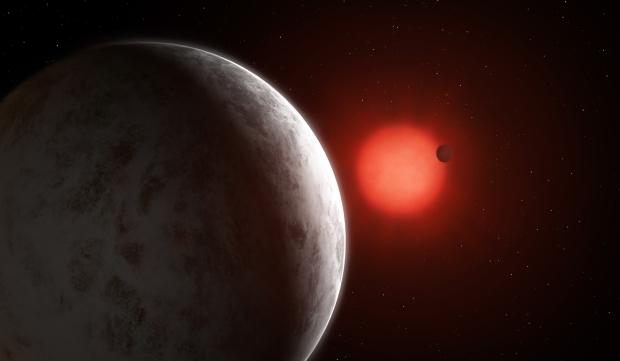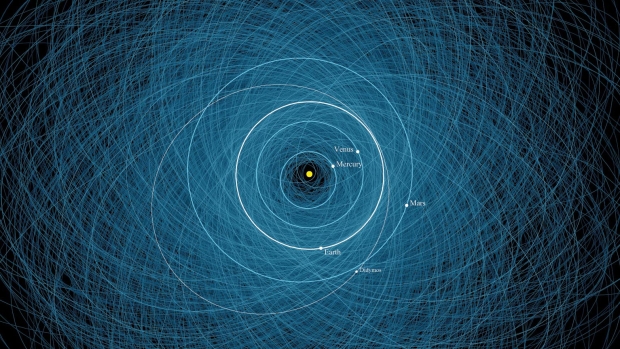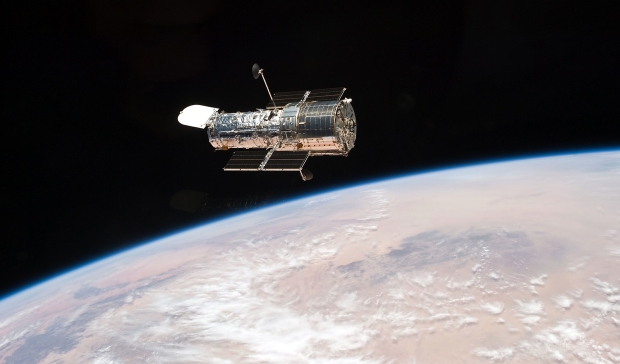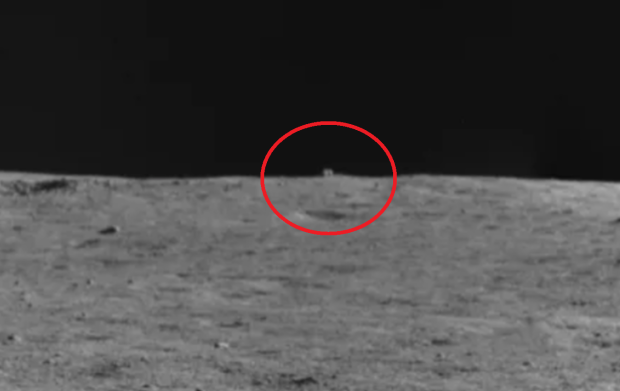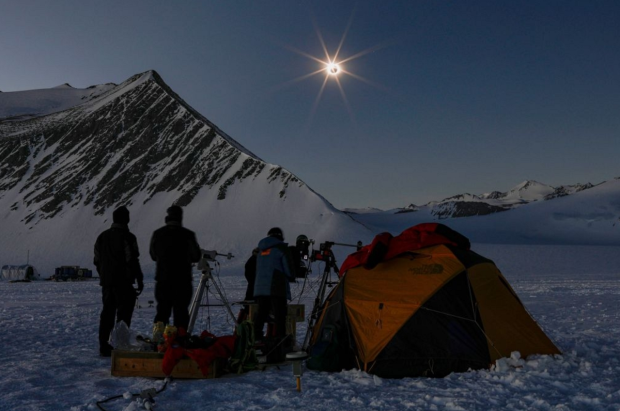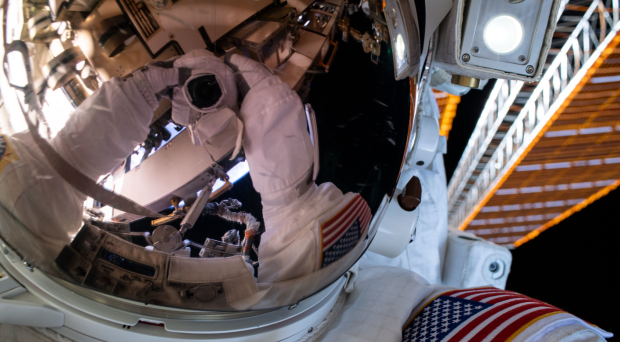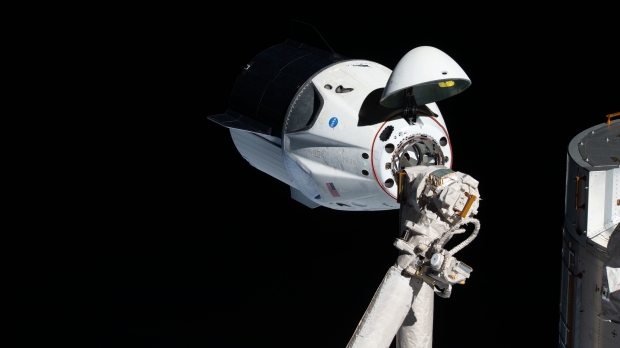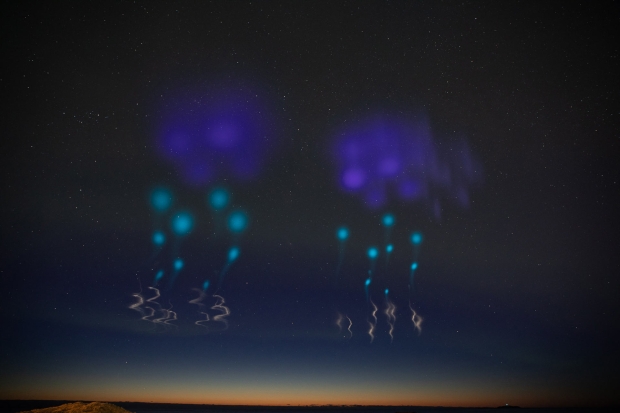Science, Space, Health & Robotics News - Page 227
Radio signals detected from distant stars may indicate hidden planets
With the most powerful radio antenna on Earth, researchers from the University of Queensland have detected radio signals from distant stars.
Dr. Benjamin Pope of the University of Queensland and colleagues from the Dutch national observatory ASTRON have been using the Low-Frequency Array (LOFAR) in the Netherlands to observe radio waves emanating from distant stars. These waves suggest the existence of unknown planets orbiting these stars.
"We've discovered signals from 19 distant red dwarf stars, four of which are best explained by the existence of planets orbiting them. We've long known that the planets of our own solar system emit powerful radio waves as their magnetic fields interact with the solar wind, but radio signals from planets outside our solar system had yet to be picked up. This discovery is an important step for radio astronomy and could potentially lead to the discovery of planets throughout the galaxy," said Dr. Pope.
Continue reading: Radio signals detected from distant stars may indicate hidden planets (full post)
NASA's new Sentry-II near-Earth asteroid monitoring system goes live
NASA has developed a new near-Earth asteroid impact monitoring algorithm dubbed Sentry-II to help defend Earth against future asteroid threats.
Survey telescopes have identified nearly 28,000 near-Earth asteroids (NEAs) to date, with additional NEAs expected to be discovered and added at a rate of roughly 3,000 per year. With advances in survey telescope technology, this rate will likely increase. In response to the potential threat posed by these asteroids to Earth, NASA has developed Sentry-II, an asteroid impact monitoring algorithm that has just gone online.
The Center for Near-Earth Object Studies (CNEOS), managed by NASA's Jet Propulsion Laboratory (JPL) in Southern California, calculates the orbit of every known NEA, creating impact hazard assessments for NASA's Planetary Defense Coordination Office (PDCO). To do so, CNEOS has used Sentry software developed by JPL in 2002.
Continue reading: NASA's new Sentry-II near-Earth asteroid monitoring system goes live (full post)
Hubble gets green-lit to return to full operation
After being put in safe mode to protect the scientific instruments aboard, the Hubble Space Telescope returns to full scientific operations.
On December 6th, NASA recovered the final instrument aboard Hubble, the Space Telescope Imaging Spectrograph. The previous instrument to be recovered was the Cosmic Origins Spectrograph on November 28th, and before that the Wide Field Camera 3 and Advanced Camera for Surveys on November 22rd and November 7th respectively.
Hubble initially went into safe mode on October 25th in response to the loss of internal synchronization messages. As NASA has worked to bring the scientific instruments back online, no synchronization message issues have been detected since November 1st.
Continue reading: Hubble gets green-lit to return to full operation (full post)
Mysterious 'house' on far side of the Moon photographed by rover
A rover exploring the surface of the Moon has snapped an image of what appears to be a mysterious "house", or "hut" object.
The image comes from an affiliated Chinese media channel called "Our Space", that details the rover Yutu 2 that first landed on the far side of the Moon back in January 2019. According to the post, the Yutu 2 rover spotted the object on the horizon while it was driving across the Von Karman crater last month, and sent back images of the object to the China National Space Administration (CNSA).
Space.com reports that the name "mystery hut" or "house" is currently being used as a placeholder name until the rover can identify what the object is. Additionally, the publication also points out that the object is most likely not a hut of any kind, and is more likely to be a large boulder that has been created from an impact event such as an asteroid. Yutu 2 is only 262 feet away from the object and will make its way over to inspect it over the next two to three months.
Continue reading: Mysterious 'house' on far side of the Moon photographed by rover (full post)
Elon Musk says this may threaten human civilization
Tesla and SpaceX CEO Elon Musk has said during an interview that global birthrates could threaten human civilization.
Musk, who is a father of six, spoke at Wall Street Journal's annual CEO Council and said brought up birthrates being a possible threat towards the existence of human civilization, saying that there is "not enough people" and called for people to have more children. The Tesla CEO went on to say that there is "smart people" who believe that there is too many people, and that Earth is overpopulated, but according to Musk this isn't the case, "It's completely the opposite".
"I think one of the biggest risks to civilization is the low birth rate and the rapidly declining birthrate. And yet, so many people, including smart people, think that there are too many people in the world and think that the population is growing out of control. It's completely the opposite. Please look at the numbers - if people don't have more children, civilization is going to crumble, mark my words", said Elon Musk.
Continue reading: Elon Musk says this may threaten human civilization (full post)
NASA is going to find the universes most violent objects with this
NASA is currently gearing up for the launch of its new telescope that will be used to find the most violent objects in the universe.
The new telescope is called the Imaging X-ray Polarimetry Explorer (IXPE) spacecraft and will be used by the agency and astrophysicists to observe the magnetic field of cosmic objects such as neutron stars and black holes. IXPE will be able to read the polarization between different X-rays that come from the environments of violent celestial objects (black holes, neutron stars). These readings will be able to teach researchers about the environment in the past and future of these objects.
NASA is planning on launching the IXPE spacecraft on the back of a SpaceX Falcon 9 rocket from NASA's Kennedy Space Center in Florida on Thursday after 1 a.m. EDT. As always, the event will be live-streamed by NASA on its website and social media channels, with the livestream beginning on Wednesday at 11:30 a.m. If you are interested in reading more about this new telescope, check out this link here.
Continue reading: NASA is going to find the universes most violent objects with this (full post)
Watch 2021's only total solar eclipse in just 1 minute with this video
The only solar eclipse to happen for 2021 recently occurred, but unfortunately, the totality was only visible in Antarctica and the Southern Ocean.
The extreme conditions of Antarctica didn't stop some photographers and scientists that were determined to see the total solar eclipse, and to everyone else's enjoyment, they have shared video footage of the event. The footage, which is about 1 minute in length, showcases a stunning time-lapse view of the Sun reappearing and disappearing, with only a few seconds of totality. If you find the video too fast, you can slow in down in the settings, which can be found in the bottom right-hand corner of the video.
The video was captured from Union Glacier on Saturday, December 4, by the JM Pasachoff Antarctic Expedition, who also live-streamed the event. The reason the total solar eclipse was only visible at certain locations on Earth is due to the Moon's shadow being very narrow. Antarctica was the best viewing angle of the total solar eclipse, while places such as Australia, New Zealand, Argentina, and South Africa could only see a partial eclipse.
Continue reading: Watch 2021's only total solar eclipse in just 1 minute with this video (full post)
Astronauts left in awe at 2021's only total solar eclipse, drops image
The International Space Station (ISS) is a fantastic vantage point for observing Earth, and recently astronauts aboard the station were left in awe at 2021's only total solar eclipse.
NASA has posted images to its "NASA Astronauts" Twitter account with a caption explaining that the Expedition 55 crew was able to view the total solar eclipse that happened on Saturday, December 4 at 2 a.m. EST (0700 GMT). Seven astronauts squeezed into the cupola, a large glass panoramic viewing dome, to see the phenomenon. NASA astronauts Kayla Barron described the event as "an incredible sight to behold."
A total solar eclipse happens when the Moon passes directly in front of the Sun from a viewer's perspective. The recent solar eclipse wasn't viewable for most people as the best angle to view its totality was in Antarctica, and while this didn't stop some photographers and scientists, it did mean most people missed it. The next total solar eclipse isn't expected to happen until April 20, 2023, and will be mostly viewable over Asia.
Continue reading: Astronauts left in awe at 2021's only total solar eclipse, drops image (full post)
NASA says SpaceX is currently its only option for shuttling astronauts
NASA recently extended its existing contract with SpaceX to include additional missions to send astronauts to the International Space Station (ISS).
SpaceX already has six crewed flights to the ISS using its Crew Dragon system planned as part of its contract with NASA. Now up to three more flights have been added to the contract. NASA solicited other companies before extending SpaceX's contract, but none met NASA's requirements.
"SpaceX's crew transportation system is the only one certified to meet NASA's safety requirements to transport crew to the space station, and to maintain the agency's obligation to its international partners in the needed timeframe," said NASA in a statement on December 3rd.
Continue reading: NASA says SpaceX is currently its only option for shuttling astronauts (full post)
Atmospheric anomaly due for study has puzzled scientists for decades
NASA has launched a sounding rocket from Norway to help understand the dense region of the upper atmosphere on Earth's sun-facing side.
There is a gap in Earth's magnetic field in a region known as the polar cusp. This gap allows solar winds from the sun to reach Earth's atmosphere, causes radio and GPS signals to behave strangely, and slows down spacecraft as they pass through this region. The air in this region is denser than elsewhere in spacecrafts' orbits around Earth, but it is not understood how or why.
The Cusp Region Experiment-2 (CREX-2) is funded by NASA and headed by Mark Conde from the University of Alaska Fairbanks Geophysical Institute. The mission aims to understand the dynamics in the cusp, first set to do so in 2019 as part of The Grand Challenge Initiative's Project CUSP. However, it was delayed due to little solar activity, and the Covid-19 pandemic only served to delay the flight further. Now, CREX-2 was finally able to launch on December 1st from a launchpad in Andenes, Norway, at 3:25 a.m. EST.
Continue reading: Atmospheric anomaly due for study has puzzled scientists for decades (full post)


